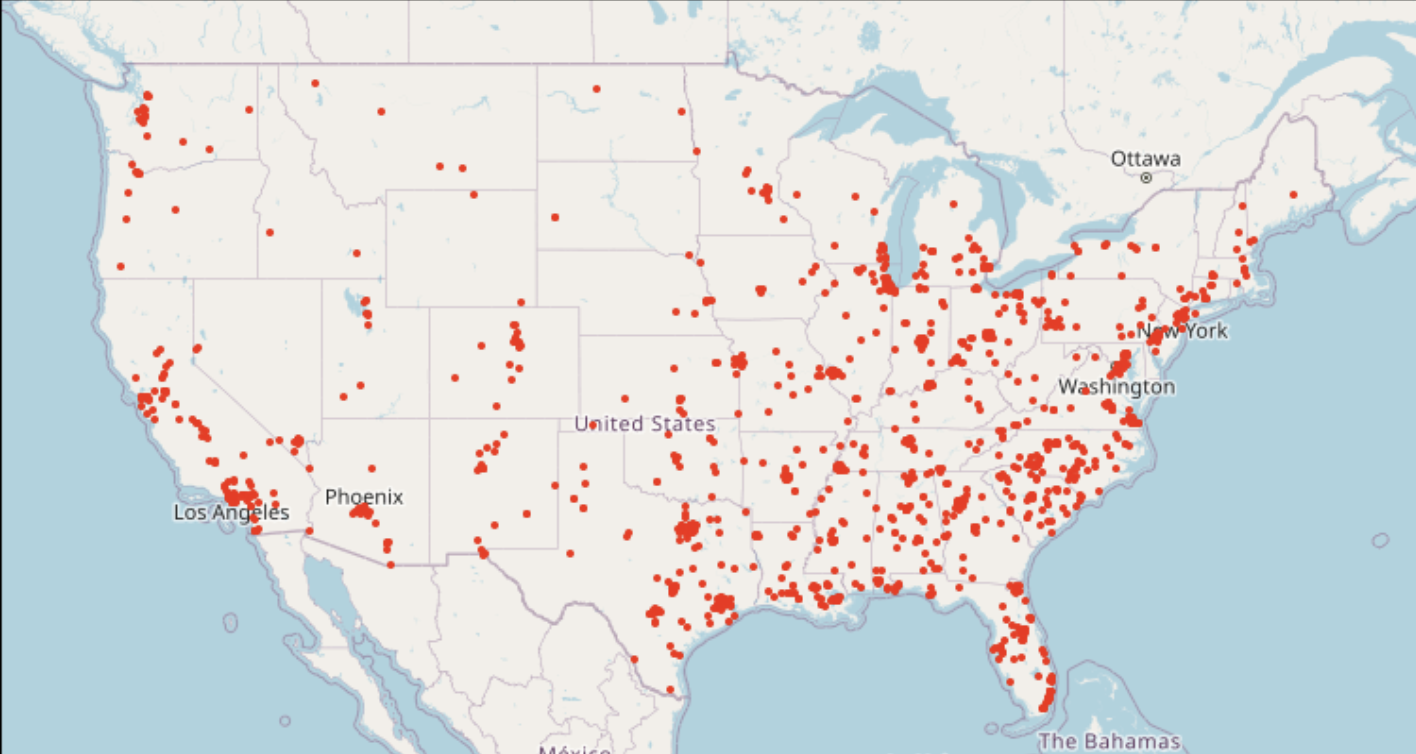Gun Violence Is a US Public Health Crisis
In the USA, 1,606 people have died from gun violence in in January 2023 alone. With 53 mass shootings already, gun violence is a threat to public health. But why is this the case, and what are some of the proposed anti-gun violence strategies?
Deaths from gun violence in January 2023, USA (excluding suicide). Source: Gun Violence Archive
Gun Violence in Context
The Second Amendment protects the right to keep and bear firearms. However, gun violence in the USA is rising, with the highest ever number of gun-related deaths in 2020 (45,222 deaths recorded). This coincides with the COVID-19 pandemic and is associated with rising poverty.
People are 25 times more likely to be killed by a gun in the USA compared to other high-income countries, with 15 to 34 year olds most affected. Gun violence injures almost 85,000 people and costs the USA $557 billion annually. It has additional societal impacts, including effects on quality of life, deterioration of mental health, and disruption to education.
Suicide contributes to 60% of all gun violence in the USA—most commonly affecting the 75 years and older age group—and guns are the main method of suicide. Gun-related suicide attempts cause death 85% of the time. However, almost 90% of people who survive an attempted suicide do not die from suicide in the future, and 70% do not attempt to end their life again. Therefore, as one of the leading causes of premature death in the USA, it is increasingly evident that anti-gun violence strategies are urgently required to combat this public health crisis. This inaction to tackle gun violence effectively has come under increasing criticism, particularly following the rapid gun control reforms in New Zealand following the Christchurch mass shooting in 2019.
Addressing Social Inequity in Gun Violence
Gun violence exposes disparities rooted in society, as previously discussed with poverty associated with rising gun violence. However, gun violence is also a racial justice issue when addressing human conflict. Black people died in more than half of gun-related homicides in 2017, yet only account for 13% of the US population. In gun-related homicides, Black men are killed fifteen-fold compared to White men, and 27% of Black people have seen a shooting. Furthermore, Hispanic and Latino people are twice as likely to die from gun-related homicide, and Native American and Alaskan Native individuals are 3.7 times more likely to be victims from gun-related violence in comparison to the White US population.
Gender inequity also poses a significant problem. Women are almost 16 times more likely to die from gun-related violence in the USA compared to other high-income countries, with most deaths due to intimate partner violence. The American Academy of Family Physicians recommends a screening process for intimate partner violence in all women of childbearing age to provide crisis intervention, counselling, and legal aid.
Anti-Gun Violence Strategies
With no national firearm registry, there is a lack of national consensus regarding measures to limit access to guns. As Amnesty summarize, “individuals can lawfully carry concealed firearms in public in every state of the USA.” Open carry of firearms in public is currently permitted in 45 states, and no license or permit is required to openly carry a handgun in public in 30 states.
According to the Centers for Disease Control and Prevention, public health utilizes four steps based on scientific methodology when developing strategies: 1) define and monitor the problem, 2) identify risk and protective factors, 3) develop and test prevention strategies, 4) assure widespread adoption.
The Education Fund to Stop Gun Violence proposes a public health strategy to tackle gun violence based on how cars were made safer in the USA, which successfully prevented over 3.5 million deaths across 50 years. This includes funding for research, increasing responsibility of manufacturers, and improving background checks, safety education, and regular renewal of licensing.
Additional strategies to combat gun violence include waiting periods (or cooling off periods). These are particularly important for gun-related suicide, given that that most people who attempt suicide do not attempt to end their life again. There is also the Extreme Risk Protection Order and Violence Protection Act. This is a temporary court order that law enforcement and family members can apply for to remove firearms and prevent further purchases from someone who is at risk of hurting themselves or others.
Gun Violence Provides a Public Health Opportunity
Gun violence remains a significant public health concern yet continues to face obstacles, such as protection under US legislation to keep and bear firearms, and long-standing lobbying from the National Rifle Association (NRA). Creating an extensive and evidence-based anti-gun violence strategy that utilises a public health perspective can help to reduce deaths, improve safety, and address social inequity in the USA.

